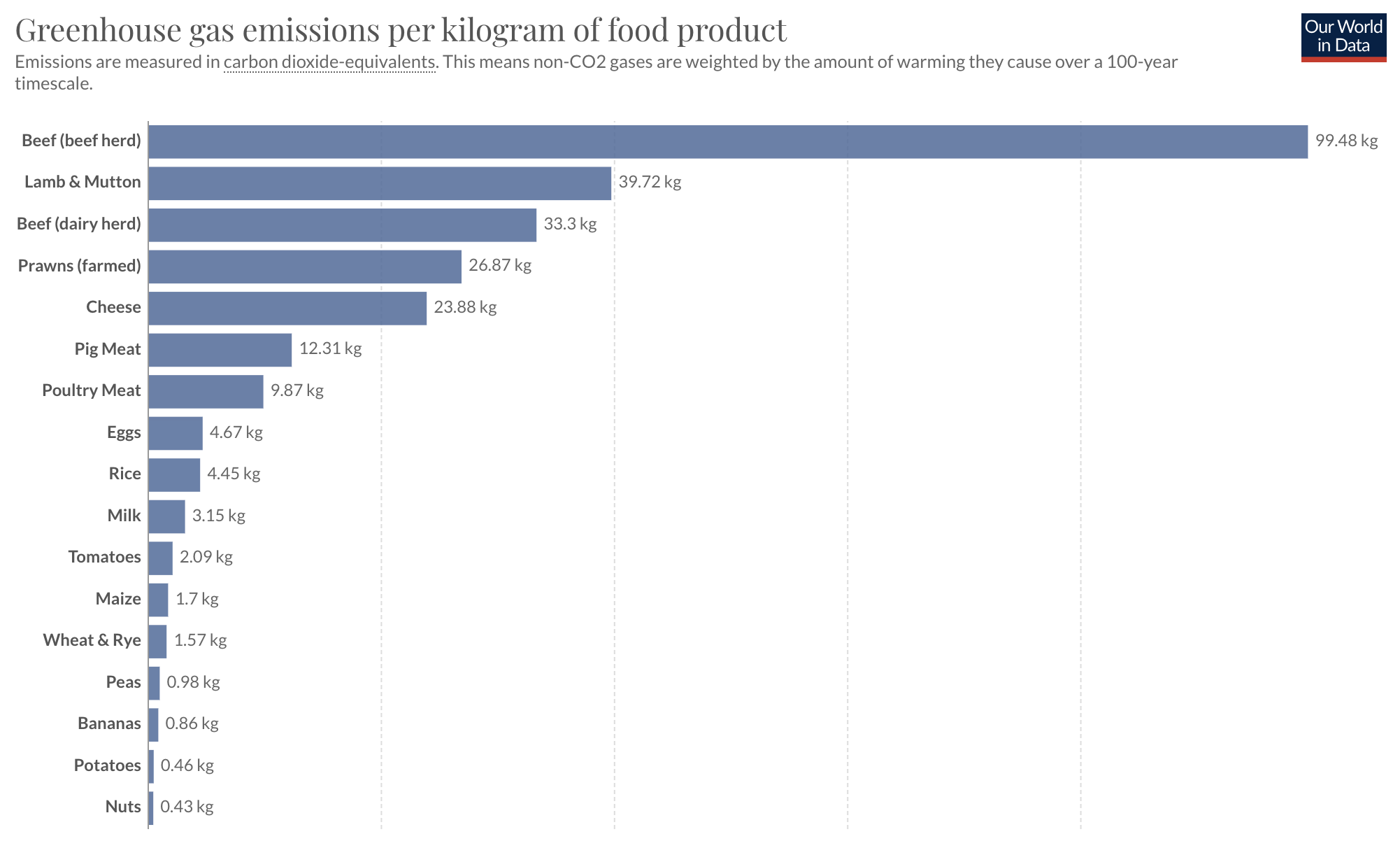Agriculture has a significant environmental impact in three key ways. First, it requires large amounts of fresh water, which can cause significant environmental pressures in regions with water stress. It needs water as input and pollutes rivers, lakes, and oceans by releasing nutrients. It is a crucial driver of climate change, responsible for around one-quarter of the world’s greenhouse gas emissions. Finally, agriculture has a massive impact on the world’s environment due to its enormous land use. Half of the world’s habitable land is used for agriculture. Large parts of the world that were once covered by forests and wildlands are now used for agriculture. This loss of natural habitat has been the main driver for reducing the world’s biodiversity. Wildlife can rebound if we reduce agricultural land use and allow natural lands to restore. Ensuring everyone has access to a nutritious diet sustainably is one of the most significant challenges we face. On this page, you can find data, visualizations, and writing relating to the environmental impacts of food.
Resource Creator(s)
Global Change Data Lab is a nonprofit organization and a registered charity in the education sector (Company Number 11725483 and Charity Number 1186433, Charity Commission for England and Wales). Their purpose is to advance education in how global living conditions and the earth’s environment are changing, through the production and maintenance of public online resources. Their flagship project, the web publication Our World in Data (ourworldindata.org), is focused on increasing the use of data and evidence to make progress against the world’s largest problems.
